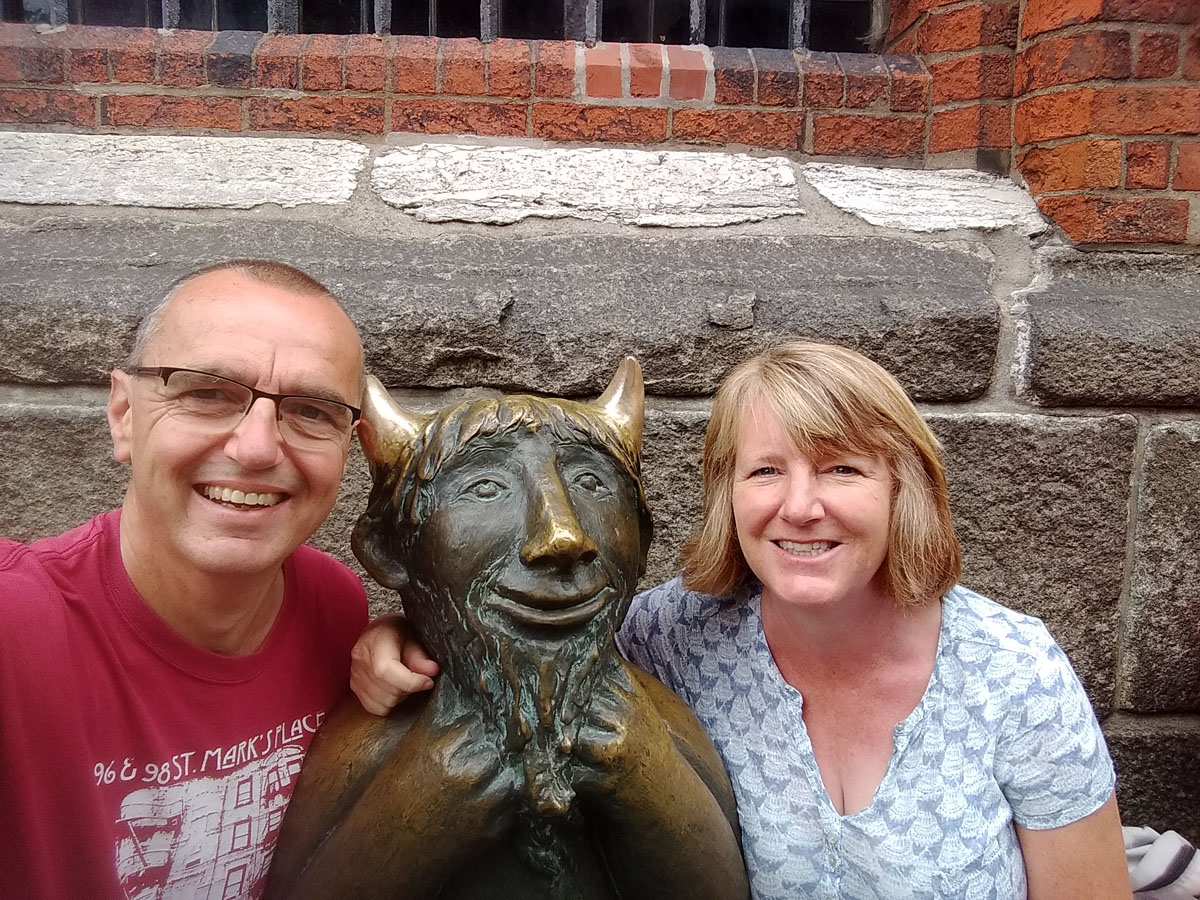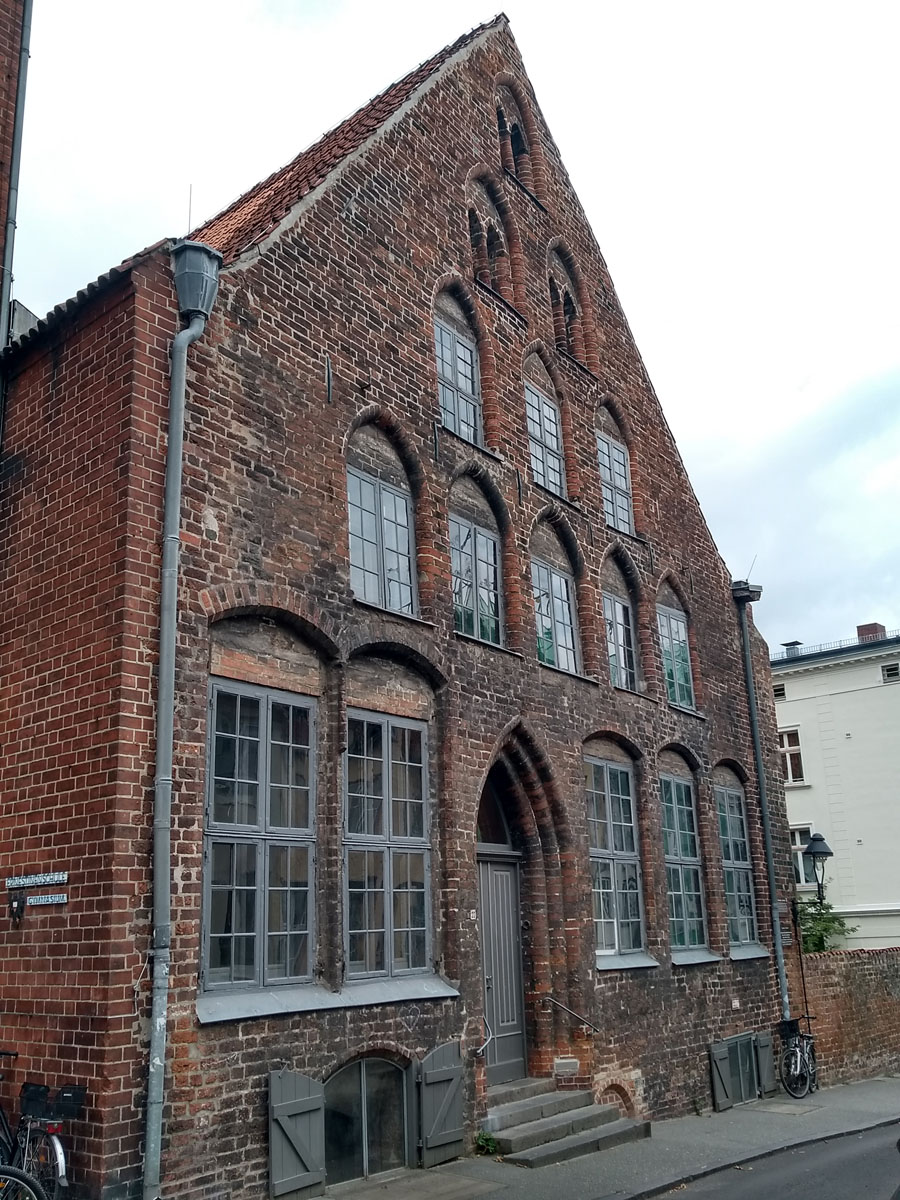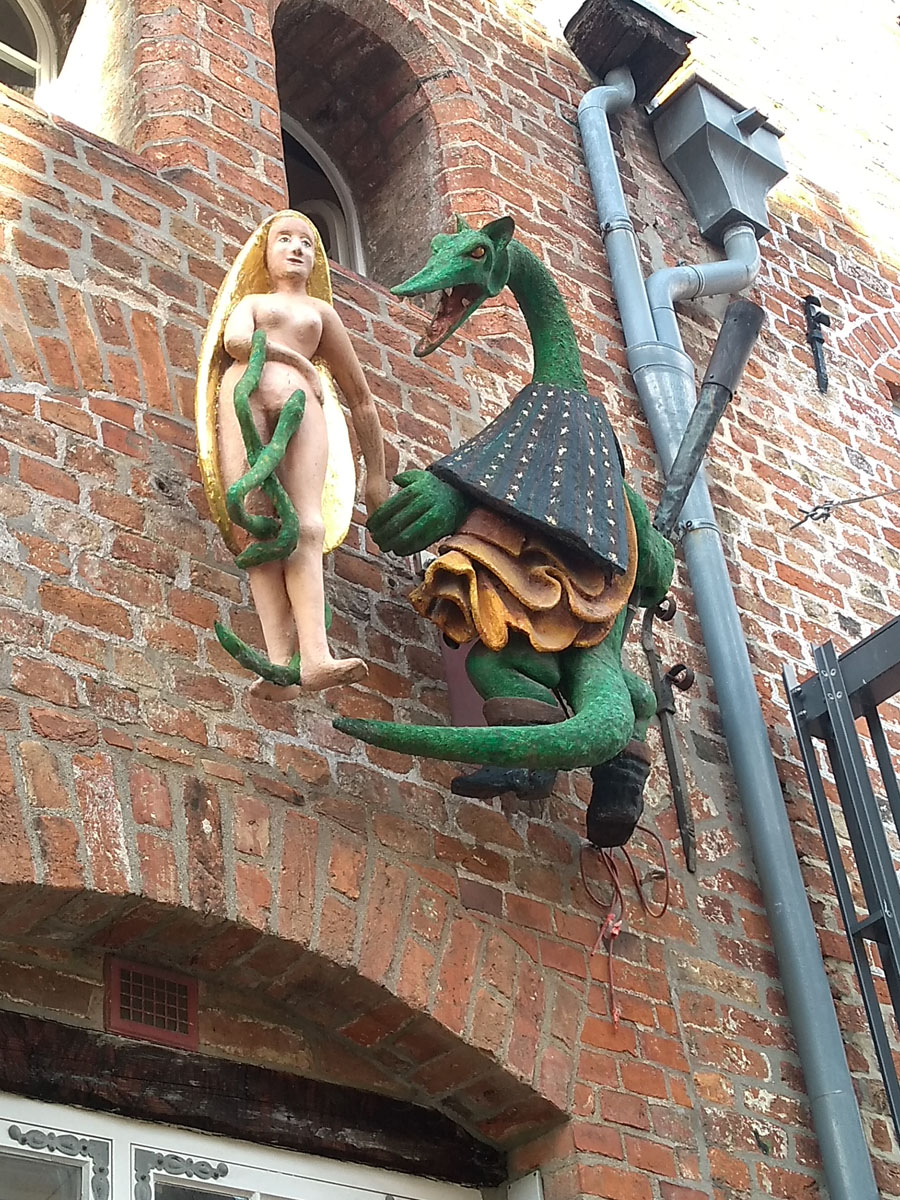Lübeck is a city that I’ve been looking forward to visiting for a long time. Full of history, it’s one of the main cities of the Hanseatic League, the trade association which was prominent between the 13th and 16th centuries. The Hanseatic League had a trading post in the City of London back in the day, a city within a city called the Steelyard, situated where the Cannon Street railway station stands today.
The closest stellplatz to Lübeck is in Bad Schwartau, one stop away on the train, but with only 15 spaces we’d need to get there early. As it’s over 130 km from Schleswig that wasn’t going to happen, so we decided to stop at Bad Oldesloe on Thursday evening and then drive 30 km to Bad Schwartau early on Friday morning and catch the train into Lübeck.
Bad Oldesloe is a lovely little town which was recommended by fellow travellers, the Auto Sleepers. It has a free stellplatz too, so what’s not to like?! We treated ourselves to lunch in town, spent the afternoon reading, and as it was a lovely evening we went back into town for a drink in the evening.







This morning we were up early and parked on the stellplatz at Bad Schwartau by 10 AM. Thirty minutes later and we were pulling into Lübeck station. At the tourist information centre we bought a city map with a guided walk for €1, and spent the day following the walk.
Lübeck is an island in the Trave river which looks quite small on the map, but it’s much larger in real life. There are loads of old looking buildings across this UNESCO listed city, but as is often the case in Germany, it’s not easy to tell which buildings are original and which ones were rebuilt after WWII. The typical Hanseatic style is a red and black brick, and we saw quite a few buildings like that.
We spent a good couple of hours in the Hanseatic Museum which was excellent. All of the displays were interactive and very informative. It was amazing to find out just how extensive the trade routes were back in the 13th century, and there was even a whole section on the Steelyard in the City of London. It’s a ‘must see’ if you’re visiting Lübeck.



















A bit of trivia to finish… in case you weren’t aware, the first characters of a German car’s registration represent the town in which it is registered: B is for Berlin, BN is for Bonn, F is for Frankfurt etc. The Germans are proud of their Hanseatic cities, and so these are prefixed on registration plates with an H, so HL is Hansestadt Lübeck, HH is Hansestadt Hamburg, HB is Hansestadt Bremen etc.
Tomorrow we’ll be visiting Wismar, which just happens to be another Hanseatic city (HWI on the registration plates!).
Mike

Lovely pictures and great text. Kings Lynn in West Norfolk is full of buildings and history relating to the Hanseatic League and the ties are being reinforced with exchanges between British and continental towns. Hanse House is a prominent building near the river and there are many buildings from mediaeval times when grape and grain were very important to the local economy. Take care and keep entertaining us all.
Thanks Margaret!
Yes I read on the Hanse website (https://www.hanse.org/en/hanseatic-cities/kings_lynn/) that Kings Lynn was a Hanseatic town. We’ve not been there before, so that’s another town to add to the growing list of places to visit!
Mike